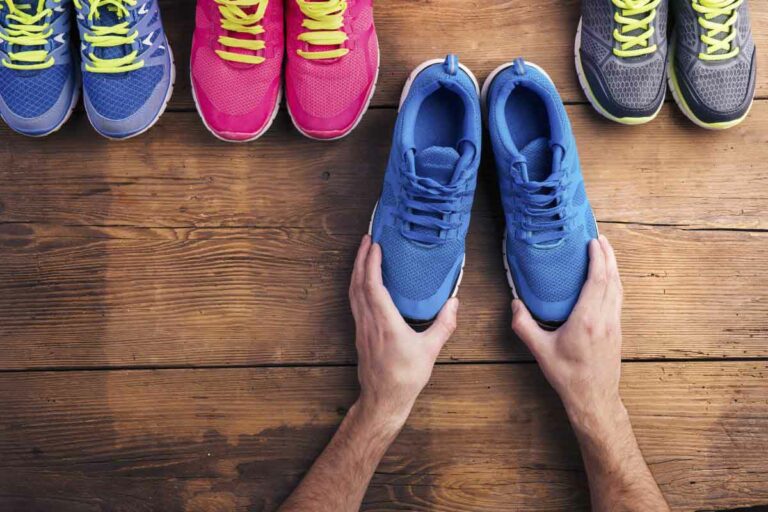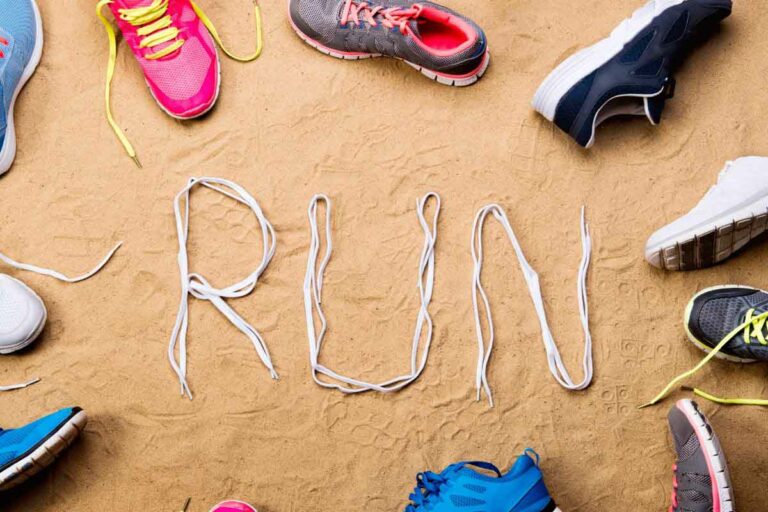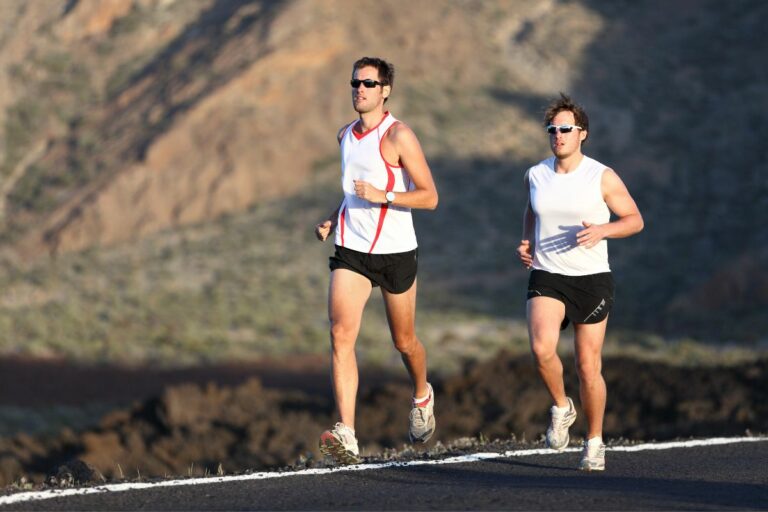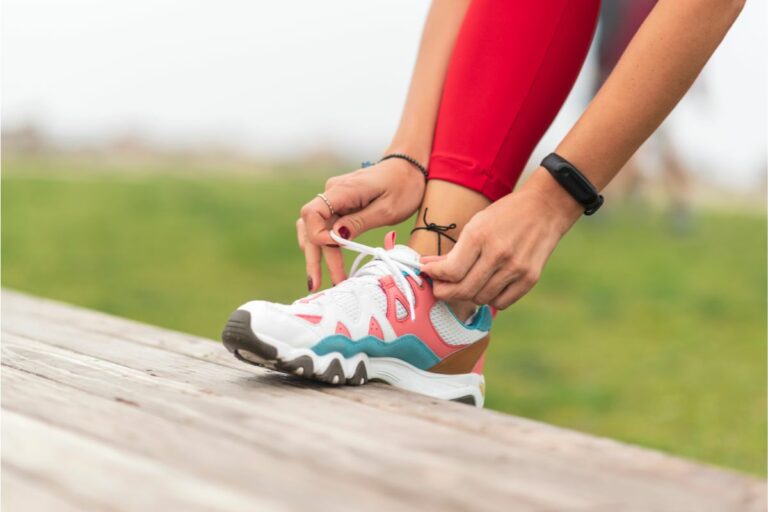How Should Running Shoes Fit? How Tight They Should Be? (10 Tips)
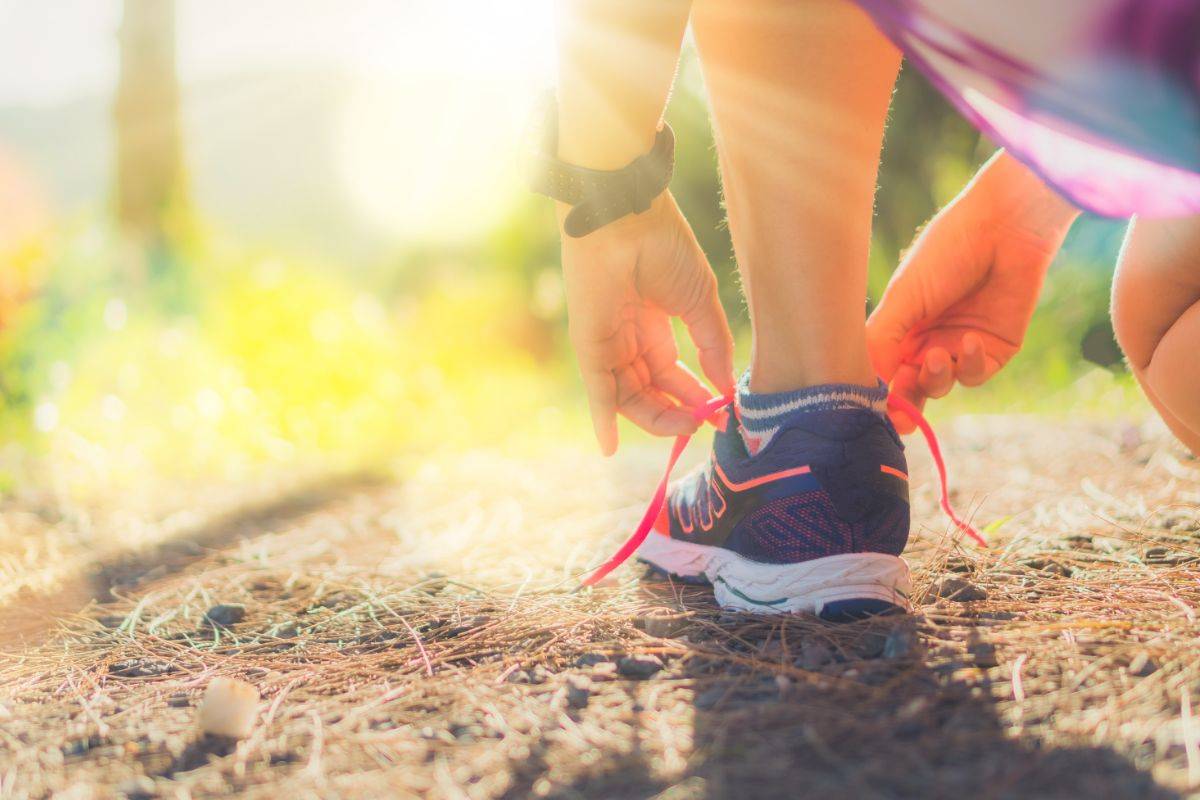
If you’re unsure what size of running shoes is the perfect fit for you, then we’re here to help.
In this article, we will take you through everything you need to know about running shoe sizes, and how you can find the perfect pair of running shoes for you.
- Getting the right size is the most important thing when it comes to buying a new pair of running shoes.
- If they don’t fit you well, you could be opening yourself up to a world of problems, including bruises, blisters, missing toenails, plantar fasciitis, and much more.
- It’s a good idea to get your running shoes professionally fitted every year or so, as the feet can change their shape and even get longer over time. The arches of your feet can collapse, causing the feet to gain length.
Understandably, it isn’t always possible to get a pair of professionally-fitted running shoes, but it is nonetheless recommended.
Here are some tips for you to find the perfect fit for your next pair of running shoes.
1. How Tight Should Running Shoes Be?
Finding the right snugness for your running shoes is essential.
A shoe shouldn’t be so tight around your foot that your toes can’t move freely.
Conversely, they should not be loose. Your foot slides around uncontrollably if they are loose. It may even happen that your heel pops out when you run.
You can adjust the fit of your running shoe by altering how you lace them. Check our article on How to Lace Running Shoes to find out more.
2. Try the Shoes on With Running Socks
When you try on a new pair of running shoes at the store, it’s a good idea to try them on while wearing the same type of socks that you would wear if you were going running.
Don’t just grab any old socks, as the thickness of your socks will have a large effect on how your running shoes fit.
3. Try Them on Towards the End of the Day
Since our feet tend to swell throughout the day as we are on our feet and moving around, it’s a good idea to try on your new running shoes at the end of the day, when your feet are at their largest.
If this is not possible, you should try on a new pair of running shoes immediately after running. Running tends to cause our feet to swell, so trying on a new pair right after a run will help you to get a better fit for running.
4. Do the Thumb Test
There are a couple of helpful ways that you can test whether or not you have the perfect fit for your running shoes.
A good rule of thumb (no pun intended) is to put your foot inside the shoe, and then press in front of your toes using your thumb.
You should have approximately ½ an inch to 1 inch of space between your longest toe and the end of the shoe. This is about the same length as the width of your thumb.
5. Check the Insole
Another surefire way of testing the size of your new running shoe is to remove the insole of the running shoe and place it on the ground. Then step on it with your foot and see how well your foot lines up with the running shoe’s insole.
This will give you a clear indication of where your toe will be in relation to the end of the running shoe.
6. Wiggle Them Toes!
Remember that different brands of running shoes will fit differently, even if they are sold in the same shoe size.
When trying on a new brand of running shoes, you should ensure that the running shoe is not too tight around your mid-foot. Ensure that your toes have enough room to be able to move around.
The running shoes should be snug enough so that your foot isn’t moving around inside them, causing friction and therefore blisters, but they shouldn’t be too tight causing hot spots and pain.
7. Learn From Your Blisters

Blisters are a clear indication of an ill-fitting running shoe. They typically occur when the shoe is not tight enough, causing the foot to move around in the shoe.
If you are getting blisters on your heels, this is a clear indication that the running shoes are too big.
If you experience blisters on the balls of your feet, the running shoes are likely to be slightly too wide for your feet, causing some slipping around inside the shoe.
8. Test the Shoe Size Using Your Bigger Foot
More often than not, we have one foot that is slightly bigger than the other.
For this reason, it’s a good idea to try on a new pair of running shoes using the larger foot, rather than the smaller one.
9. Try Different Models and Brands of Shoes
As previously mentioned, different models and brands of running shoes will fit differently, even if they are the same shoe size.
It’s a good idea to try on a range of different models and brands of running shoes until you find a pair that works for the specific size and shape of your feet.
For example, most Hoka shoes, like the popular Clifton and cushioned Bondi, run true to size. Hoka also offers different widths for many of its shoes.
On the other hand, Nike shoes are known to run small. However, there are always exceptions.
10. Check Your Shoe Volume
Shoe volume is the measurement of space inside the running shoe. A good indicator of correct shoe volume is in the eyelet chain.
As you try on the shoes and lace them up, take two fingers and place them in between the uppermost eyelets.
- If you have two fingers’ worth of space between the eyelets, this is an indication that the shoe volume is correct.
- If you only have space for one finger between the eyelets, this shows you that the shoe volume is a little too high for the size of your feet. You’re having to pull your laces tightly to get the shoes locked in place across your mid-foot.
- If you have three fingers’ worth of space between the eyelets, you do not have enough shoe volume for the size of your feet, which may indicate that your feet are too wide for this model of shoe.
The Bottom Line
Getting a pair of running shoes that fit properly will help you run faster and for longer, with less pain and irritation. If you’re aware of your shoes when you are running, this is a clear indication that you don’t have the right fit.
No matter how expensive shoes you purchase, properly breaking in your new running shoes can prevent blisters and other mild foot problems. You need to wear the shoes to allow the material to soften and adjust to the shape of your feet.
Another struggle when choosing running shoes is what kind of shoes to have. So if you are wondering what the difference between neutral and stability running shoes is, we have a separate article on that topic.
When you run, you want to just be able to focus on the task at hand, and not be distracted by annoying blisters or bruising. So basically, good shoes make running more fun!



